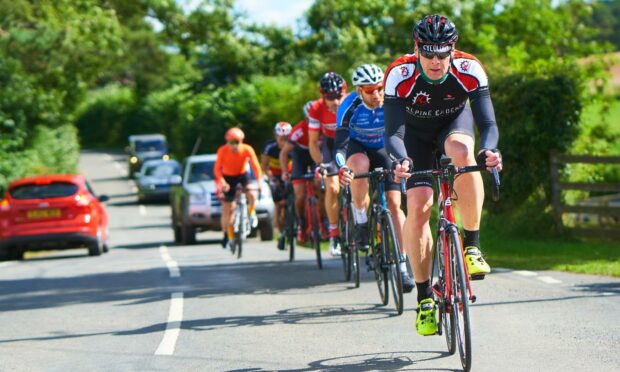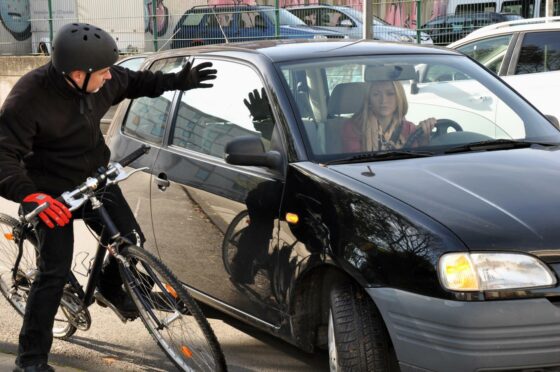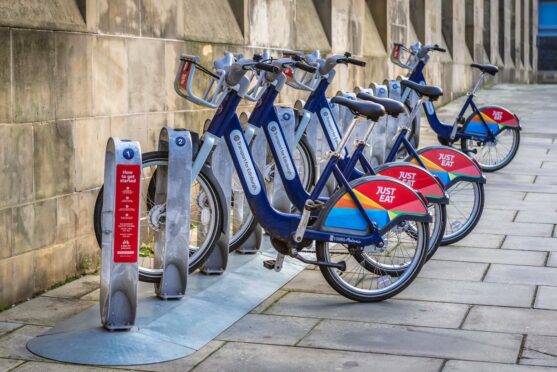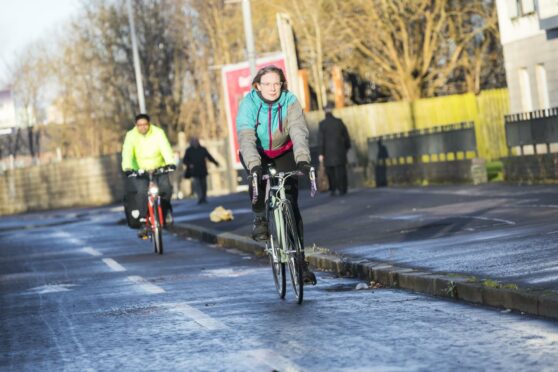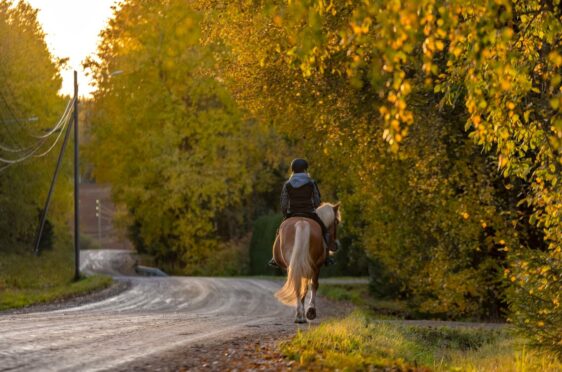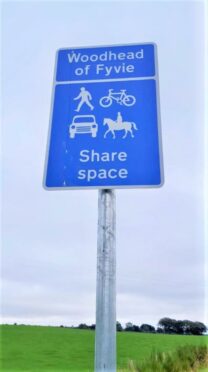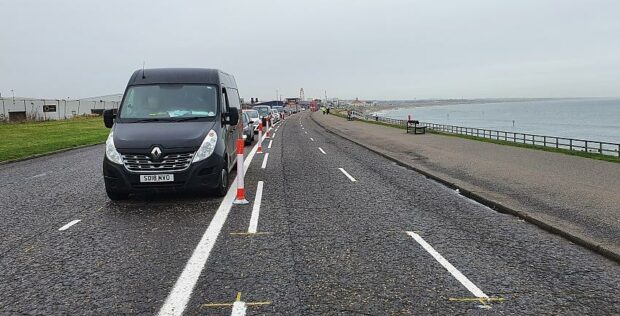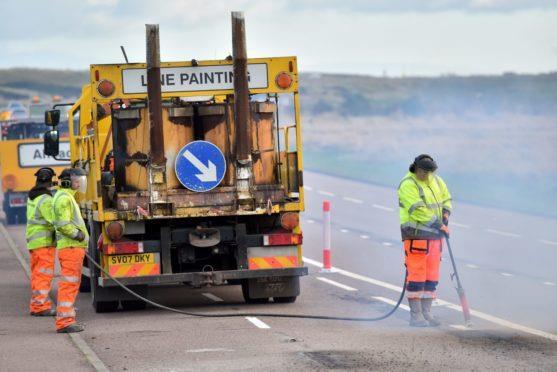During the pandemic, cyclists received an unexpected bonus in the form of empty roads and fewer collisions.
Keen cyclists welcomed the cleaner air plus the massive increase in hobbyists as people sought new ways to stay fit in the pandemic.
Along with the drive to cut car use, it looked as though more people would be using bikes on a permanent basis as the government set targets to end the use of fossil fuels.
However, grants and payments to encourage the use and purchase of electric cars – along with an increase in charging infrastructure and zero road tax – has simultaneously seen a steady rise in interest among drivers in switching to EV, especially on top of last month’s fuel crisis.
What does this mean? Essentially, bikes are here to stay and cars aren’t going anywhere any time soon. And far from a reduction in traffic, roads are likely to remain as busy as ever as both drivers and cyclists compete for space.
Roads have been narrowed to accommodate cycle lanes and spaces for people, while some have been removed altogether to encourage more pedestrianisation in towns. And with the rise in the use of EVs come other risks: heavier vehicles with faster acceleration.
For cyclists, it’s not an ideal combination – even if the air does become cleaner. For drivers unwilling to use unreliable public transport and concerns around Covid, it seems like relentless punishment and an unfair burden to bear. It prompts the question – can drivers and cyclists co-habit comfortably? And if so, how can drivers make life easier for cyclists battling the post-Covid increase in car use?
To date, the debate has become “toxic” says Jon Barron of Nestrans, the transport partnership for Aberdeen City and the shire. He is keen to see better communication between both groups and says the solution to competition for space is simple: a roll-out of shared space projects, so that the roads can be used safely by everyone.
“Let’s not get hung upon the unhelpful and sadly often toxic driver vs rider debates that feature all to regularly across social media channels,” he said. “The simple fact remains that we all deserve, and have the right to, travel across our road network safely so we can get home, to work to the shops or whatever our destination.”
While city cycling is one matter, there are also additional concerns for drivers in rural areas who sometimes unexpectedly encounter novice cyclists on narrow, winding roads.
Good practice for drivers is to check their mirrors every few seconds. The same is true for cyclists.
Mr Barron, a keen cyclist himself and founder of Grampian Cycle Partnership, acknowledged that the Highlands and north-east do present some additional issues for drivers and cyclists, and urged extra caution on both sides.
“We are blessed in the north east with having some wonderful roads, with glorious scenery and views afforded,” he said. “Riding through them by bike, in my view, can actually make them even more of an experience with the sights, sounds and smells that bit more palpable.”
“However, while enjoying the experience is an important matter, it must take its place below the absolute of giving the road – those using it and your surroundings – your full concentration.
“My main message for drivers and riders on rural roads, is to ensure they are prepared for the unexpected. Drivers – please give plenty room as you overtake a cyclist, at least as much room as you would when overtaking a car.
“And don’t become fixated on the cyclist,” he adds. “Remember to pay attention, and look out for, oncoming or emerging traffic, and if unsure, wait. It’ll only delay you by a few seconds.”
Advice for cyclists and drivers
And he has some advice for cyclists tackling rural roads, too, advising the use of lights in daytime, especially at this time of year, hi visibility clothing, and checking their surroundings.
“Good practice for drivers is to check their mirrors every few seconds,” said Mr Barron. “It is considered as important to know what’s behind you as what is ahead and around you, and the same is true for cyclists.”
Last week, Cycling Scotland held its annual conference and examined issues around road safety, offering advice on safer rural cycling and challenging common myths around cycling – including a common bugbear held by drivers regarding cyclists taking to the middle the of the lane, making it trickier to overtake.
A spokesperson addressed this issue, pointing out that cyclists in rural areas often find themselves on roads with a much higher speed limit or on single track roads.
“It is important to ride in the primary position in the centre of the lane,” he said. “This allows you to be more visible to other road users and have a better view of the road ahead and behind.
“It will also prevent a car from overtaking in an unsafe manner and encourage drivers of vehicles to use passing places.”
However, he also advised rural cyclists to pay extra consideration to farm traffic, adding that large farm vehicles often have reduced vision of the space around them, with the strong likelihood that the driver’s hearing may be reduced.
And four-legged road users deserve special attention from cyclists, too, he said.
“Horses can be easily startled, so if you are on a bike, approach them slowly. Let the horse rider know you are there. Be prepared to stop, give plenty of room when you do pass and never pass on the inside.”
So can drivers and cyclist play happily? Mr Barron points to the ongoing Aberdeenshire Council shared space pilot in Inverurie, Fyvie and Banff, which has met with some success – a campaign the AA supports, and which mirrors its own efforts to boost awareness from both sides.
An AA spokesperson said: “We agree that our roads should be used in harmony. In 2014 we launched our AA Think Bikes campaign to remind road users that our roads can be a shared space between four-wheeled vehicles and vulnerable road users, such as those riding two wheeled vehicles.”
The campaign had responded to a survey that showed that two thirds (66%) of drivers consider cyclists to be inconsiderate road users; drivers over 65 were the most likely to say cyclists were inconsiderate (69%), and young drivers aged 18-to-24 were the least likely to say cyclists were inconsiderate (57%).
Trust between the two groups remains an issue, and despite efforts to encourage shared spaces and greater driver awareness of cyclists, Mr Barron acknowledges that some cyclists could do more to help.
“There seems to have been an emergence of some – what has been described as – anti-social cycling,” he said. “I tend to refer to this as careless or dangerous cycling. It’s way more than anti-social. Those riders are putting themselves, and pedestrians/other road users, at risk.
“Nothing irritates and infuriates a safe and responsible cyclist more than seeing a fellow cyclist riding irresponsibly or putting themselves, or others, in harm’s way. The rules of the road are there for us all to follow rigidly.”
It may not be realistic to replace every car journey with a bike ride, but every journey cycled will make a difference in tackling the climate emergency.
However, Mr Barron added that it was worth reminding people that many cyclists are drivers, too, and mostly act responsibly when using roads.
“The growth in cycling numbers during the pandemic has been pleasing on so many fronts,” he said. “Not least seeing so many actively enjoy the physical and psychological benefits of riding a bike but the environmental and health benefits that cycling brings.”
And the spokesperson from Cycling Scotland added: “It’s really important that people feel like they can cycle safely on our roads. Building cycling infrastructure, including dedicated cycle lanes separated from road traffic, is the number one priority to make our roads safer for cycling.
“It may not be realistic to replace every car journey with a bike ride, but every journey cycled will make a difference in tackling the climate emergency.”
- For more information see the Good Cycling Guide from Grampian Cycle Partnership, supported by local authorities, NHS Grampian, Police Scotland and other organisational partners.
"What if someone invented a form of transport that was cheap, low impact, zero-emission, and helped to keep us fit at the same time? Well, they did, they invented it 200 years ago, and it’s called a bicycle…"https://t.co/uoQE9dz21r via @aberdeencf
— Aberdeen Cycle Forum (@aberdeenCF) October 31, 2021
